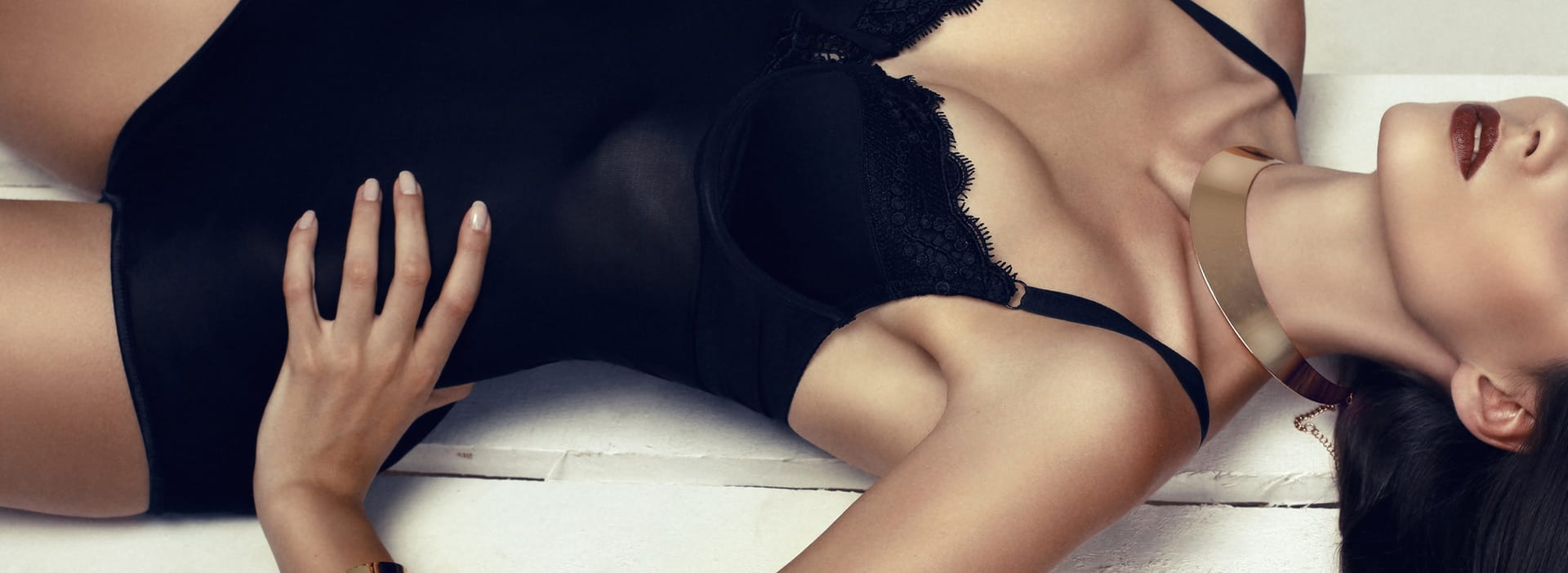Ultherapy
Has skin laxity begun to make you look and feel older than you truly are? If you’re interested in undergoing a non-invasive procedure to correct this looseness, you may want to consider Ultherapy. Ultherapy is an effective method of ultrasound skin tightening offered at Princeton Plastic Surgeons that provides patients with beautiful, long-lasting results.
Our practice is dedicated to providing patients with quality aesthetic care. We understand that cosmetic alteration isn’t just about medical expertise or experience: it’s also about taking a careful, artistic approach to rejuvenation. Please contact the office of Dr. Hamawy in Princeton, NJ today for more information about our practice, or to schedule a consultation.
What Is Ultherapy?
Also referred to a Ulthera, Ultherapy is an exciting new ultrasound skin tightening procedure. It is the only procedure FDA-approved to non-invasively lift the skin of the eyebrow, neck, and chin area. It can also be used to tighten the skin and the décolletage. The energy emitted via the ultrasounds lets Dr. Hamawy inspect multiple layers of tissue and direct the treatment to areas of the face that will be most effectively repaired. This procedure brings patients natural-looking results that make them look and feel younger and healthier.
Ultherapy’s use of ultrasound waves triggers the body’s regenerative processes and stimulates the skin, inducing its production of collagen and elastin. Skin around the eyes, over the cheeks, under the chin, and elsewhere is lifted and tightened, making a smoother, younger appearance while minimizing wrinkles and lines.
How Does It Work?
Ultherapy works through the time-tested power of ultrasound energy, a technique that has been successfully used in the medical field for the past 50 years. When utilized for cosmetic purposes, ultrasound energy is particularly safe and effective because it passes easily through the uppermost layers of the skin, only heating the deeper tissues of the dermis.
Once ultrasound energy reaches these tissues, the collagen and elastin proteins there begin to coagulate: these proteins are responsible for supporting the structure of the skin, making it fuller and tighter. The coagulation of these essential proteins kicks the body’s healing response into overdrive, causing it to quickly generate new skin cells, elastin, and collagen. Between 2-3 months after treatment, this regeneration manifests itself in the form of tighter, healthier, younger-looking skin.

What Can I Expect From Treatment?
Unlike many similar non-invasive skin tightening methods, Ultherapy can be completed in as little as one treatment session. The amount of time this in-office procedure takes depends on the area being treated: the face and neck usually take between 60-90 minutes while chest treatments usually take 30 minutes. When the procedure begins, patients typically only feel minimal discomfort; the ultrasound energy aimed at the skin feels like gentle electrical pricks.
Unlike other skin tightening treatments, Ultherapy involves minimal downtime.
While the treatment area may appear flushed at first, this redness typically disappears within a few hours. Other common side effects include swelling, tingling, and tenderness, but these should also disappear soon after treatment. Changes in skin tone, tightness, and fullness should begin to become visible 2-3 months after treatment, with continued improvements through six months.
Treatment Areas
There are a wide variety of regions that could benefit from Ultherapy. Many cosmetic procedures focus on the face, but Ultherapy is viable as a skin rejuvenation procedure all around the body. After all, wrinkles and loose skin don’t appear just on the face, but also the arms, hands, and chest. Anyone who is wishing to reduce these and have firmer, smoother skin all around can pursue Ultherapy.
Brow
Through the natural processes of aging, the browline can sag as the underlying tissues lose elasticity, and lines can form across the forehead as well as between the eyebrows (often known as “frown lines”). Rather than having a brow lift, you can undergo Ultherapy to reduce the signs of aging on the brow naturally.
Chin
The lowest part of the face, the chin can prominently highlight drooping skin, creating a double chin effect or softening the jawline. Ultherapy can help firm up this area, pulling loose skin back up, making it firmer, and providing youthful rejuvenation.
Neck
Skin below the neck often sags as one grows older, giving it a bulging appearance, rather than looking tight and firm. Extreme instances of this may even give a person “wattles” that many may find unattractive when they look in the mirror. Ultherapy can help the neck and throat skin regain its younger look.
Chest and Décolletage
The face is hardly the only place on the body to benefit from Ultherapy. Wrinkles and lines occur across the chest and cleavage regions, which can further increase the appearance of age. Ultherapy encourages the body to produce collagen in these areas, smoothing out lines and helping the chest and décolletage gain a firmer look.
Benefits
Ultherapy is an excellent option for those wanting to rejuvenate their skin over their face, chest, arms, and elsewhere without resorting to surgical cosmetic procedures. There are a number of great reasons why it should be considered for you.
Less Risk
Because it is noninvasive and doesn’t require surgery, there are little-to-no health complications that need to be considered.
Less Pain
There is no scarring or damaged tissue to deal with in recovery. While there may be some sensitivity or numbness, Ultherapy is practically painless.
Immediate Recovery
There is no downtime needed after an Ultherapy procedure. You can resume normal activities immediately.
Youthful Visage
Enjoy firmer, smoother skin around the face, chest, and arms that can take years off your appearance and reverse the aging process.
Multiple Sessions
It is possible to return to Dr. Hamawy for more Ultherapy sessions, either targeting new areas of the body or reapplying the treatment to past regions. This can maintain or improve the appearance of rejuvenated skin, though results will vary depending on the amount of time between sessions and your lifestyle choices.
Ultherapy Vs. Thermage
Thermage is similar to Ultherapy in that it stimulates the body’s natural production of collagen. However, it differs in the form of energy it uses to do so. Where Ultherapy uses ultrasounds, Thermage employs radiofrequency into the skin to produce similar effects. Both treatments cause heating of the skin in the targeted areas. Ultherapy tightens the skin around the face, and chest, while Thermage is designed to target wrinkles around the eyes, face, and reduce bulges around the body.
Ideal Candidates
Are you considering Ultherapy but also wondering if you are a viable candidate for the procedure? A number of facial symptoms would make you a good candidate, such as mild to moderate elasticity loss of skin around the face and various parts of the body. Please note that if skin elasticity loss is more severe, Ultherapy may not prove as effective as some surgical alternatives. Discuss this with Dr. Hamawy during your consultation to determine how far along the aging process has taken your skin.
Because Ultherapy is so gentle, nearly anyone interested in addressing skin laxity in the eyebrow, neck, chin, and décolletage areas is a potential candidate.
Patients with loose skin under the chin and throat, drooping eyebrows, lines and wrinkles around the eyes and mouth, and “heavy” cheeks are all potential candidates for the procedure. Since it is nonsurgical, Ultherapy does not require as many health qualifications, since no anesthesia is used in the process. During your initial consultation appointment, Dr. Hamawy will take into account your cosmetic goals and current state of health and help decide if Ultherapy is right for you.
Schedule A Consultation
Consultation
During the initial consultation with Dr. Hamawy, you will discuss the Ultherapy treatment and review your aesthetic goals and expectations. Dr. Hamawy will inspect the areas of the skin you wish to have treated and evaluate whether your skin will benefit from Ultherapy. In the case that Ultherapy is not right for you, Dr. Hamawy will be sure to recommend an alternative treatment to help meet your needs. He will also discuss your medical history and current health to ensure this treatment is a safe option for you. If deemed a good candidate, you and the doctor will work together to build a treatment plan tailored to you.
You will also be given the opportunity to schedule your treatment; however, there is no obligation to do so.
Ultherapy Treatment Proess
To prepare for Ultherapy, your skin will be cleaned, and the target areas will have ultrasound gel applied. Ultrasound imaging will be used to inspect the skin and figure out where the ultrasound energy will be applied for optimal effectiveness. The ultrasound machine will then be applied over the desired regions for as long as is needed to stimulate the body’s collagen production in that area.
These sessions generally only take 60-90 minutes. Afterward, you are free to go about your daily routine. No downtime needed!
Recovery
During the procedure, it is not uncommon for patients to experience slight discomfort as energy is transferred into their tissue at certain depths. This sensation is different for each patient but only lasts as long as the process is being performed, and dissipates as soon as it is finished.
Fortunately, Ultherapy, being noninvasive and non-surgical, requires no real downtime after the treatment session. Normal activities can resume immediately, and there are no specific post-treatment steps to take. Some patients may experience lingering signs of flushed skin, swelling, tingling, or periodic numbness. However, these side effects are temporary and should disappear quickly.
Results
Ultherapy does not usually provide immediately visible results, as it adjusts the skin and underlying tissues through the production of collagen and elastic materials the body creates. This can take two or three months before the full results, though some patients do see a slight initial change in the treated areas. As for how long the results last, that is somewhat dependent on your body’s natural collagen production, how far along in the aging process you are, and lifestyle choices. Avoiding things such as heavy smoking or drinking can improve overall skin elasticity and keep the results in place for longer. In the long run, Ultherapy can be applied numerous times, but age will inevitably bring back wrinkles and loose skin.
Cost Of Ultherapy
Average cost: $700-$3,000
The cost of your Ultherapy procedure will depend on your specific case and if you opt to receive additional treatments or procedures. Dr. Hamawy will be able to give you a more precise quote during your consultation. He will also be able to provide various payment plans and financing options based on your needs. Contact Princeton Plastic Surgeons today for more information about the many benefits of Ultherapy and to receive a custom Ultherapy quote.

Schedule a Consultation
Contact Us2025 © Copyright Princeton Plastic Surgeons. All Rights Reserved. Privacy Policy
Princeton Plastic Surgeons, based in the New Jersey area, boasts board-certified surgeons who specialize in procedures such as facelifts, breast lifts, breast augmentations, and tummy tucks.



